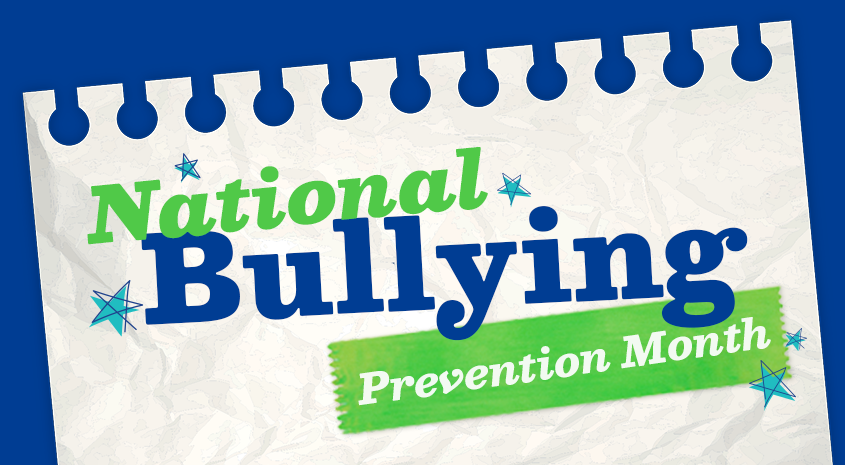
October 9, 2024
Embracing Bullying Prevention Month: How Harmony Fosters Connection and Well-Being
“By incorporating SEL in every lesson and activity, we can alleviate many tensions that can occur in the classroom between students. Open communication and fostering a team environment allows kids to connect!”
– Jennifer Wienke, Program Development Coordinator, Fairbanks, Alaska
Understanding the Impact of Bullying on Student Mental Health
October marks National Bullying Prevention Month, a crucial time to reflect on the alarming and disheartening statistics surrounding bullying and mental health in schools. Chronic absenteeism has skyrocketed to 28% in 2022 from 15% in 2018 (Return to Learn Tracker). Suicide rates among U.S. preteens aged 8 to 12 have increased significantly, with an average rise of 8.2% annually from 2008 to 2022 (NIH). In addition, approximately 1 in 5 U.S. teens experience symptoms of anxiety or depression, often exacerbated by bullying and violence (Kaiser Family Foundation). In a world where only 55% of young people feel connected to their peers at school (CDC), fostering a sense of belonging has never been more essential.
Now’s the time to think about what we can do to turn around these statistics and support our children in all environments.
The Role of Social and Emotional Learning (SEL)
Harmony Academy recognizes that promoting well-being and creating an inclusive environment requires intentional strategies. Our social and emotional learning (SEL) resources play a pivotal role in enhancing students’ overall sense of belonging and desire to be at school. Integrating SEL principles into daily lessons empowers students to navigate their emotions, build strong relationships, and cultivate a positive school culture.
Addressing Chronic Absenteeism Through Connection
When students feel safe and supported, they are more likely to attend school consistently. That’s why Harmony offers SEL resources, such as Quick Connection Cards, to promote emotionally healthy relationships among peers and educators. This approach can not only enhance attendance but also encourage active participation in the learning process, paving the way for academic success.
Creating a Sense of Belonging in School
The well-being of students is at the forefront of our mission. Social and emotional learning activities, such as Mindful Minute or Relaxation Station, teach students vital skills for managing emotions and resolving conflicts peacefully. This proactive approach can not only diminish instances of bullying but also equip students with tools to advocate for themselves and others.
Quick Insights from Harmony EAG Advisors
We asked our Harmony Educator Advisor Group (EAG) to share what strategies and resources they use to support thriving healthy classroom environments and how they can be proactive when it comes to addressing bullying in the classroom.

Q: October is National Bullying Prevention Month. What can educators do to prevent bullying from becoming an issue in their schools? How can they keep students excited about coming to school to learn every day?
A: By incorporating SEL in every lesson and activity, we can alleviate many tensions that can occur in the classroom between students. Open communication and fostering a team environment allows kids to connect!
— Jennifer Wienke, Program Development Coordinator, Fairbanks, Alaska

Q: What strategies do you use to keep the sense of community strong and minimize bullying at your school?
A: We use Quick Connection Cards to continue to build community. Our administrator includes anti-bullying messages during morning announcements. We also have Buddy Readers with the middle schoolers reading to K–2nd students to enhance the family community feel where we all take care of each other.
— Josie McClain, 2nd Grade Teacher, Gila Bend, Arizona

Q: What strategies do you use to keep the sense of community strong and minimize bullying at your school?
A: Preventing bullying involves creating a safe, inclusive, and respectful environment. At our school, we establish clear behavior expectations and emphasize kindness through daily interactions and classroom discussions. Harmony lessons help students manage emotions and communicate effectively. Building strong relationships allows me to understand their needs and provide support.
— Allison Robb, Dean of Academics, Tucson, Arizona

Q: What strategies do you use to keep the sense of community strong and minimize bullying at your school?
A: In 5th grade, I work with my students to develop leadership skills and teach them how to stand up for others without becoming bullies. I love using the Battle the Bullybot in the Harmony Game Room App, which helps students develop the language necessary for teamwork and communication.
— Connie Michael, 5th Grade Teacher, Billings, Montana
3 Steps to Address Bullying
Harmony is always on a mission to foster an inclusive school environment where every student feels valued and connected. With Harmony resources, educators and school leaders can reduce bullying, establish chronic absenteeism interventions, and promote well-being in the classroom. Here are three ways to do it:
- Incorporate SEL in Classrooms: A 2022 analysis of the Harmony Curriculum (Third Edition) found that the program promoted prosocial behaviors (88% effective or very effective), positive communication skills (93% effective or very effective), emotional and behavior management (86% effective or very effective and solves problems that arise in the classroom (92% effective or very effective) (Harmony Academy).
- Provide Ongoing Professional Development: Harmony offers the Harmony Leader Certificate and the Harmony Teacher Certificate. Both certificates provide the key structures and components to support healthy, thriving classrooms. Teachers and school leaders can earn Continuing Education Units, and use them toward an advanced degree at National University.
- Strengthen Parent-School Bonds: Schools that are addressing a surge in chronically absent students often find success when they focus on strengthening the bonds they have with the parent community. To leverage Harmony, incorporate activities like “Harmony Meet Ups with Parents” at family events or gratitude journaling to promote positive connections and foster a sense of belonging within your school community. Additional resources for parents are shared in this recent article.
Level Up With Harmony Plus!
We are excited to launch Harmony Plus to amplify the benefits for educators and school leaders by accessing to our new administrator tools, classroom resources, dashboards, and professional networking opportunities. Get ready to foster a strong sense of belonging where students look forward to joyful learning in school every day!
Citations:
Kaiser Family Foundation. (2022). Mental health and substance use: A guide for youth and families. Retrieved from https://www.kff.org
Return to Learn Tracker. (2022). Chronic absenteeism in the 2021-2022 school year. Retrieved from https://www.returntolearntracker.net
National Institutes of Health. (2023). Trends in suicide among preteens in the United States. Retrieved from https://www.nih.gov
Centers for Disease Control and Prevention. (2023). Youth risk behavior surveillance. Retrieved from https://www.cdc.gov
Harmony Academy. (2022). A case study of Harmony Thir